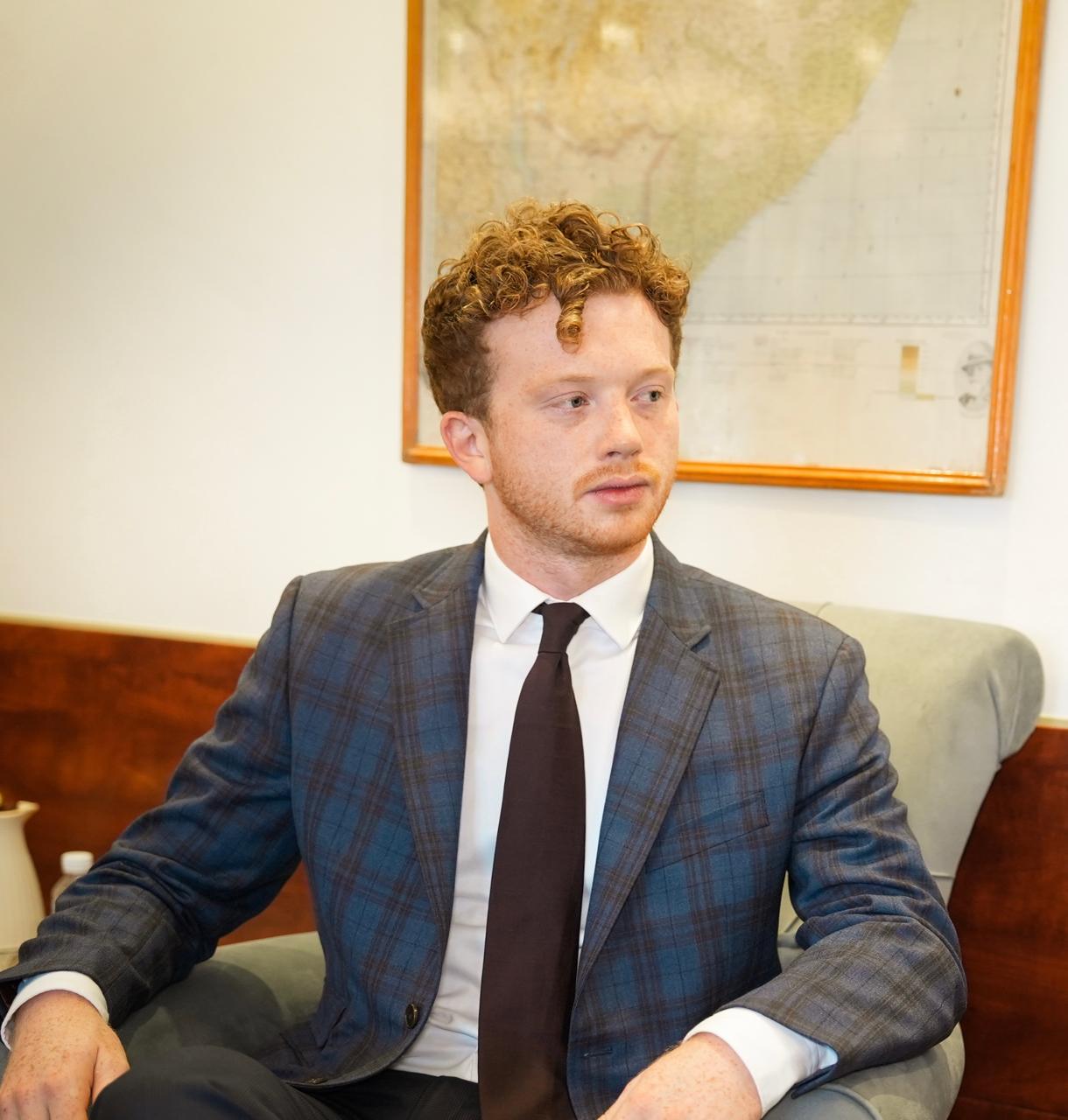Scenes of Syrian jihadis, turned rebels, overrunning the presidential palace in Damascus stood as a watershed moment for the entire international community, particularly those watching from Tehran and the Red Square.
Syria, followed by events in Ukraine and now Yemen, continues to symbolise the strategic shift affecting Russia and Iran in the region. As Syria turns a page, whilst Ukraine enters peace negotiations, and the U.S. attempts to ‘bomb the Houthis’ out of existence; old partners seek new arenas for their wars of attrition.
Sudan symbolises the new arena, or more broadly, the Red Sea basin. With new arenas, come new opportunities, and Russia’s recalibration with it’s bedfellow, Iran, is just that.
A Golden Fortress
Iran and Russia’s bid to project it’s influence in the Middle East, as it did during the good old days under Assad, fell flat.
Instead, their protégé – Bashar al-Assad and his cronies – ran away to hide amongst the golden fortress of Moscow’s skyline.

Instead of accepting fate, both Tehran and Moscow launched a failed counter-revolution in Syria followed by realigning their collective policies in the Horn of Africa: specifically, Sudan.
Syria: Failed Counter-Revolution
According to Syrian sources, the attempted coup last week amounted to an “Iranian-Russian backed effort” to exploit the security vacuum in western Syria. Arabic media pointed to the rise in Russian and Iranian propaganda, circulated online, before the attacks.
Attacks by pro-Assad elements on HTS security forces saw several culprits killed, followed by “reported revenge killings” on pro-Assad elements.
Evidence on both sides show mounting evidence of unrestrained killing.
Unsurprising Realities of Political Transition
Take Iraq, or Libya, for instance, and policymakers can understand the reoccurring patterns of exploitation, extraction, and intransigence by state actors following revolutions and the transitional state of insecurity that follows.
The ad-hoc nature of sanctions relief, following Ahmed al-Sharaa’s rise to power, confirms past realities.
The sequence of disinformation, circulated on platforms like X, separated those who advocate for development from those who eye up a slice of the pie in an expanding proxy war.
Sanctions Relief Follows Attempted Counter-Revolution
Fortunately, the failed counter-revolution has led to a series of measures aimed at relinquishing sanctions on Syria.
The U.S. brokered a peace agreement with the integration of the Syrian Democratic Forces’, into the new Syrian administration, whilst greenlighting Doha’s export of natural gas to Damascus.
Berlin announced a 300-million-euro aid package for Damascus, at the EU Conference, as the new regime consolidates its hold on power in this new Syria whilst the U.S. is reportedly eyeing up further sanctions relief in exchange for security conditions.
Each step is a nail in the coffin for active Assad cells as Damascus centralises political and economic control, whilst Tehran and Moscow regroup further south.
Mutual Interests for Russia & Iran: Horn of Africa
As the Levant slips away from Putin and Khamenei’s fingertips, we see Russia and Iran’s desperate attempts to claw back influence: first in Yemen and second in Sudan.
Russia & Iran: Yemen
Since the start of the Ukraine war, ties between both states have deepened because of Russia’s reliance on Iranian Shahed drones and ballistic missiles for the battlefield.
According to U.S. defence officials, Tehran has supplied Moscow with more than 2,000 Shahed-131/136 series kamikaze drones and 18 more advanced Mohajer-6 UAVs in addition to Inter-Continental Ballistic Missiles.
Both states have deepened defence cooperation since the war in Ukraine with ties most prominent in Yemen as both states gain economically and militarily from Iran’s Houthi militia in the Red Sea.
Disruption of Western-aligned vessels, that ‘support Israel’, are targeted and therefore facilitate a useful deterrent for Moscow – able to free ride off Iran’s regional foreign policy – whilst funding its war efforts via LNG loopholes and military footmen for the Russian war economy.
Mohamed al-Karami, a Yemeni journalist familiar with the recruitment process between Sanaa’, Muscat, and Moscow, reported on the recruitment of a new batch of Yemeni battle-hardened recruits for Russia’s war in Ukraine in an exclusive for The Daily Euro Times.
This marks the latest development of ties between Moscow, Tehran, and Sanaa’ as the Houthis send battle hardened men rather than deceived Yemeni recruits with the genuine hope for well-paid salaries and possible citizenship in Russia’s engineering sector.
In turn, Russia benefits from the disruption in the Red Sea both economically and militarily as it stifles Western-aligned commerce, sustains the opportunity cost of EU-funded arms packages to Ukraine, whilst funding Russia’s war economy.
Russia & Iran: Sudan
Moscow has deliberately kept its options open in Sudan, although the latest developments to side with the SAF indicate a recalibration of Moscow’s foreign policy in the Horn of Africa.
Before the removal of Assad, Russia kept its options wide open in case of a defeat of the Sudan Armed Forces. Moscow aimed to secure a Red Sea naval base in Port Sudan with the aid of RSF leader: Muhammad Hamdan Daglo Hemedti.
However, according to the Armed Conflict Location & Event Data, an independent conflict monitor, SAF advances in Sennar and El Gezirs states and recent gains in North Kordofan, Khartoum North, Omdurman, and parts of Khartoum since February this year have rolled back the momentum of the RSF.
Therefore, the SAF’s latest gains across the capital, Khartoum, has shifted Moscow’s strategic thinking in Sudan whilst events in Syria and Ukraine continue to push the Kremlin to locate strategic maritime assets further afield in strategically important areas: the Horn of Africa.
Moscow’s relationship with Tehran has deepened since the war in Ukraine, specifically on the defence-industrial relationship, providing a relationship of convenience with accessible defence interoperability in new settings.
Alignment in Sudan: National & Regional Drivers
A mixture of regional factors is driving Moscow into the arms of Tehran in Sudan other than defence cooperation on Ukraine.
The SAF’s support for Ukrainian mercenaries and the success of the Houthis in Yemen supports greater cooperation with the SAF-Iran axis in Sudan, in exchange for severing ties with Ukraine and securing a military base on the Red Sea, because of the uncertainty over a Russian maritime presence in western Syria.
Areas of Possible Divergence
Unsurprisingly Moscow and Tehran do not align on every particularity when it comes to Sudan.
Iranian-Sudanese relations predate the coup in 2019, that removed Omar Hassan al-Bashir, with deep ties between Tehran and Khartoum under the former Islamist government.
Whilst the SAF did away with the former Islamist regime, former military and intelligence chiefs associated with the former regime, continue to fight alongside the SAF in Sudan today.

Iran’s regional involvement with these Islamist elements, inside Sudan and across surrounding countries, namely Yemen and Somalia, could cause friction with Moscow should the Trump administration seek future cooperation with Moscow in Africa or Yemen.
Further tensions revolve around Khartoum’s engagement with the U.S. and the trajectory of U.S.-Russian relations if this rapprochement continues.
Khartoum has indicated that it is open to U.S. dialogue on naval activities along its coastline, whilst using cooperation with Iran as a carrot for Washington to reengage in Sudan amidst American priories in Ukraine, Gaza, and Syria.
The Same Terms, Different Setting
Moscow and Tehran’s relationship may have deepened since Russia’s war in Ukraine, yet the theatre of cooperation remains the same although in a new setting: the Red Sea.
Cooperation revolves around the same axis, mutual support for each other’s goals on strategic maritime access with subtle differences in each other’s priorities and ideologies for supporting the SAF and each other’s broader policies in the Horn of Africa.
The geopolitical blowback in Ukraine and Syria, perceived invincibility of Houthi disruption in the Red Sea, and the SAF’s growing momentum against the RSF has shifted Russia’s priorities in Sudan whilst defence interoperability, with Iran, supports defence cooperation.
Whether this relationship withers remains to be seen as the SAF is no natural partner for Moscow yet the war in Sudan seems to be shifting in favour of the SAF.
Keep up with Daily Euro Times for more updates!
Read also:
Anything for a Dollar: Djibouti, Arms Smuggling, and Terrorism
Triangular Diplomacy: Djibouti, the Houthis, and Somalia
U.S. in Yemen: ‘The Only Way’ is Bombs






